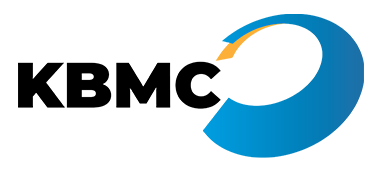Automobile industry is one of the growing sectors in Bangladesh. Compared to the last decade, the growth of the automobile industry has gradually increased due to the socio-economic development and purchasing power of the middle and upper middle class of the country. According to BRTA data, the number of passenger car vehicles increased at a 5.43% CAGR rate from 2011-2020. However, compared to other Asian countries, the passenger car penetration is still very low in Bangladesh. There are only 2.5 car owners per 1000 population. In India, 30 people among 1000 individuals owned a car at the end of 2018. In Myanmar, about 12 people out of 1000 own a car. Higher tax rate on automobiles, inadequate and narrow national highways, high traffic density, high price of fuels, higher interest rate on private vehicle financing are responsible for the lower number of car owners in Bangladesh. Due to the covid-19 pandemic, sales of automobiles declined to its lowest in 7 years. In this article, we will discuss current trends and the future of Bangladesh’s automobile industry.
The use of motorized vehicles has increased significantly in the last 2 decades (2000-2020). According to The Daily Star, There were only 303,215 units of registered motorized vehicles in 2003 in Bangladesh. But up to MAY 2021, According to BRTA data, there were 4,729,393 units of registered vehicles in Bangladesh. Among them, 544,616 are passenger cars. The automobile market is again dominated by sedan cars, covering almost 68% of that passenger car market. The Remaining 12.40% are covered by Sports utility vehicles (SUVs) and 19.27% are covered by microbus. Due to the increase in purchasing power, mass people are buying vehicles more than ever before.
The purchase rate of cars increased dramatically till 2017. In that year, the number of total private passenger cars, jeep and microbus registered by BRTA reached 32,942. But the purchase of personal vehicles decreased in the next couple of years. In 2020, the number decreased to 20,093. Slower economic activity, adjustments in the financial market, higher tax rates, the popularity of ride-sharing companies can be the reasons for the fall. The covid-19 pandemic also hits the market to the worst. But it is expected that the automobile market will be back on track after the pandemic effect ends and the economy gets stable. According to The Daily Star, around 1 crore 20 lakh middle-class people of Bangladesh are earning enough to own a car and are willing to have one. This population class has a growth rate of 10% per year as well.
Although cars are not yet manufactured in Bangladesh, many companies, both public and private, have been assembling cars. The first automobile assembly operation was started in 1966, by ‘Pragati Industries Limited’. They were operating through a joint venture with the government. After independence, the government of Bangladesh nationalized ‘Pragati Industries Limited’. This plant basically assembles Mitsubishi brand’s SUVs for the government officials. The Bangladesh government is also planning to manufacture local branded cars here in ‘MUJIB BORSHO’ with the help of Japanese Mitsubishi company. Apart from that, some local private automobile assembling companies are operating in Bangladesh including IFAD Autos Ltd, Aftab Automobiles, Fair Technology Limited, Bangladesh Auto Industries Limited, Bangladesh Machine Tools Factory, Bangla Cars, Niloy-Hero Motors, PHP Automobiles, Pragoti Industries Limited, Runner Automobiles and Uttara Motors Limited. But locally assembled cars haven’t gained much attraction in the market so far. In 2020, among the new registered cars, 82% are reconditioned or grey market imported, 16% are brand new imported, and only 2% are locally assembled vehicles. Let’s see some trends of the Bangladeshi automobile market in recent years.
Korean players are looking to expand the market, distribution channel and product portfolio in the Auto part and electric vehicle category. The market for e-motors, inverters, electric drive systems, electric compressors is expected to have significant growth between now and 2030. JV can target this fast-growing global market with a world-class portfolio. The scope is much wider considering battery, cooling system, engine components, Electric components and plastic parts.
We welcome Joint venture initiatives along with fresh proposals based on market demand and export capabilities. Please contact us with your proposals.

Technology and trade are binding the world together. Globalization over the last few decades has pulled many nations out of poverty. Industrialization has propelled few countries as international powerhouses.
82 10 7133 8921
info@kbmanufacturingconsortium.com
Copyright © 2021 Korea Bangladesh Manufacturing Consortium. All Rights Reserved